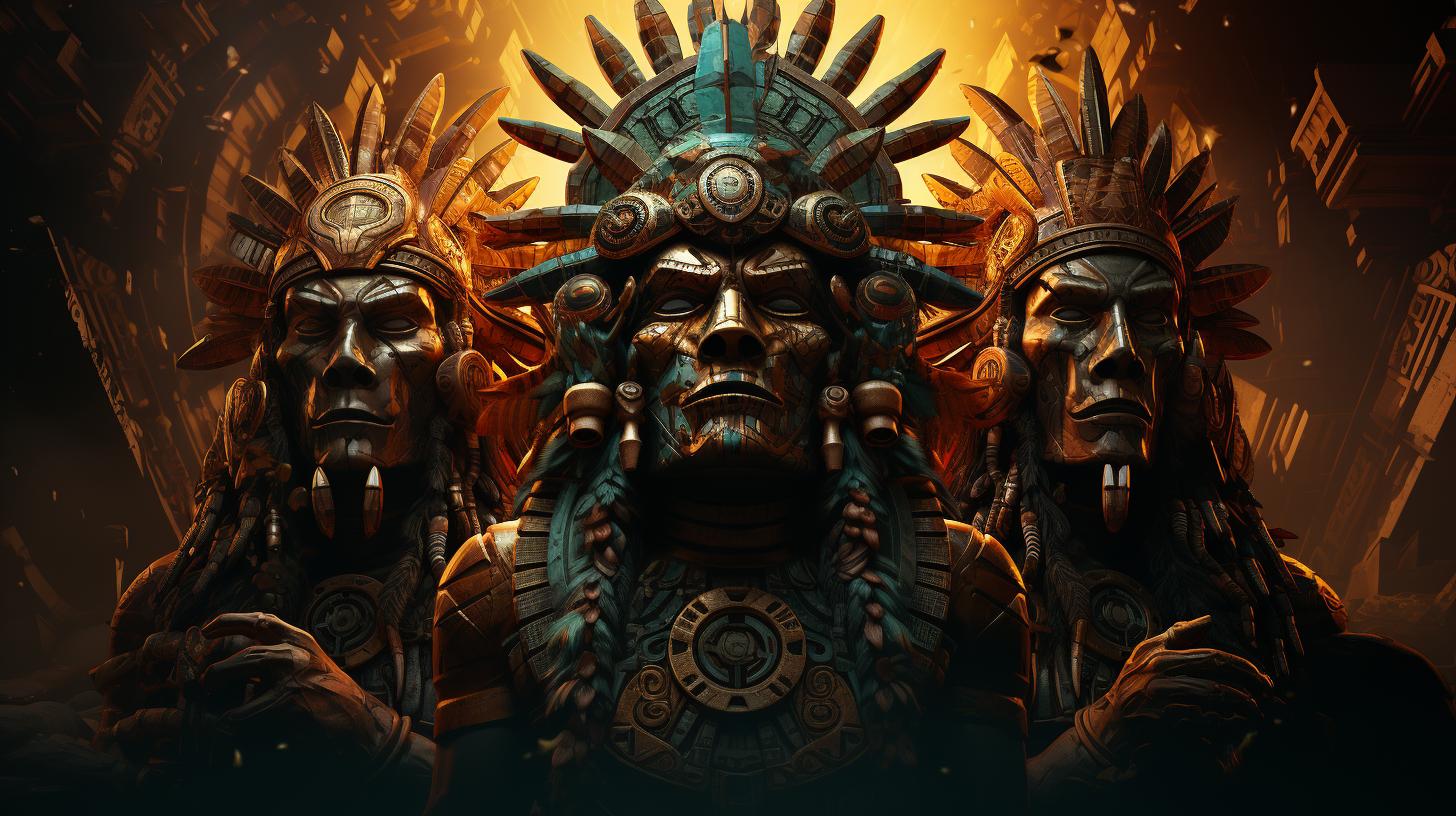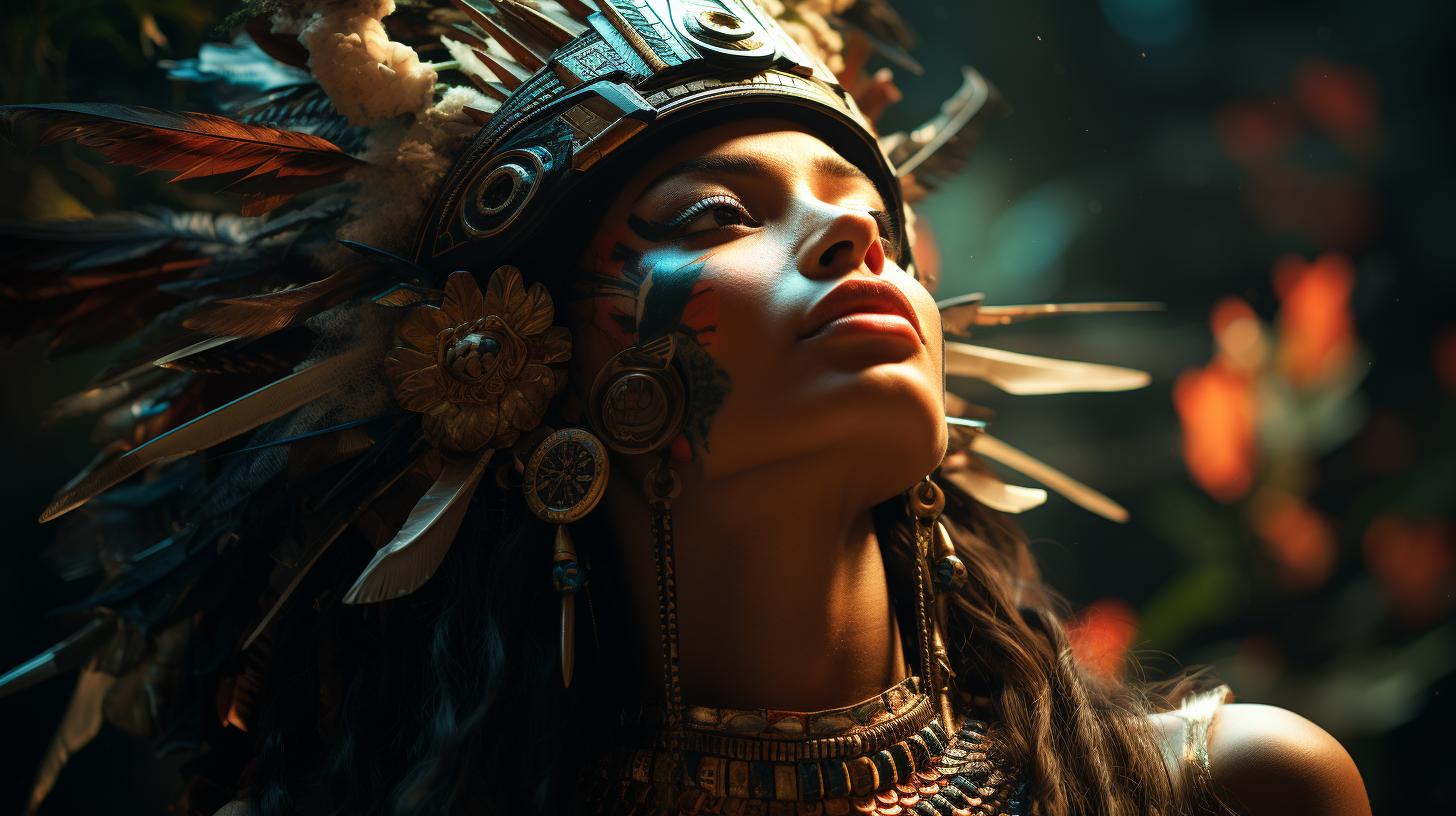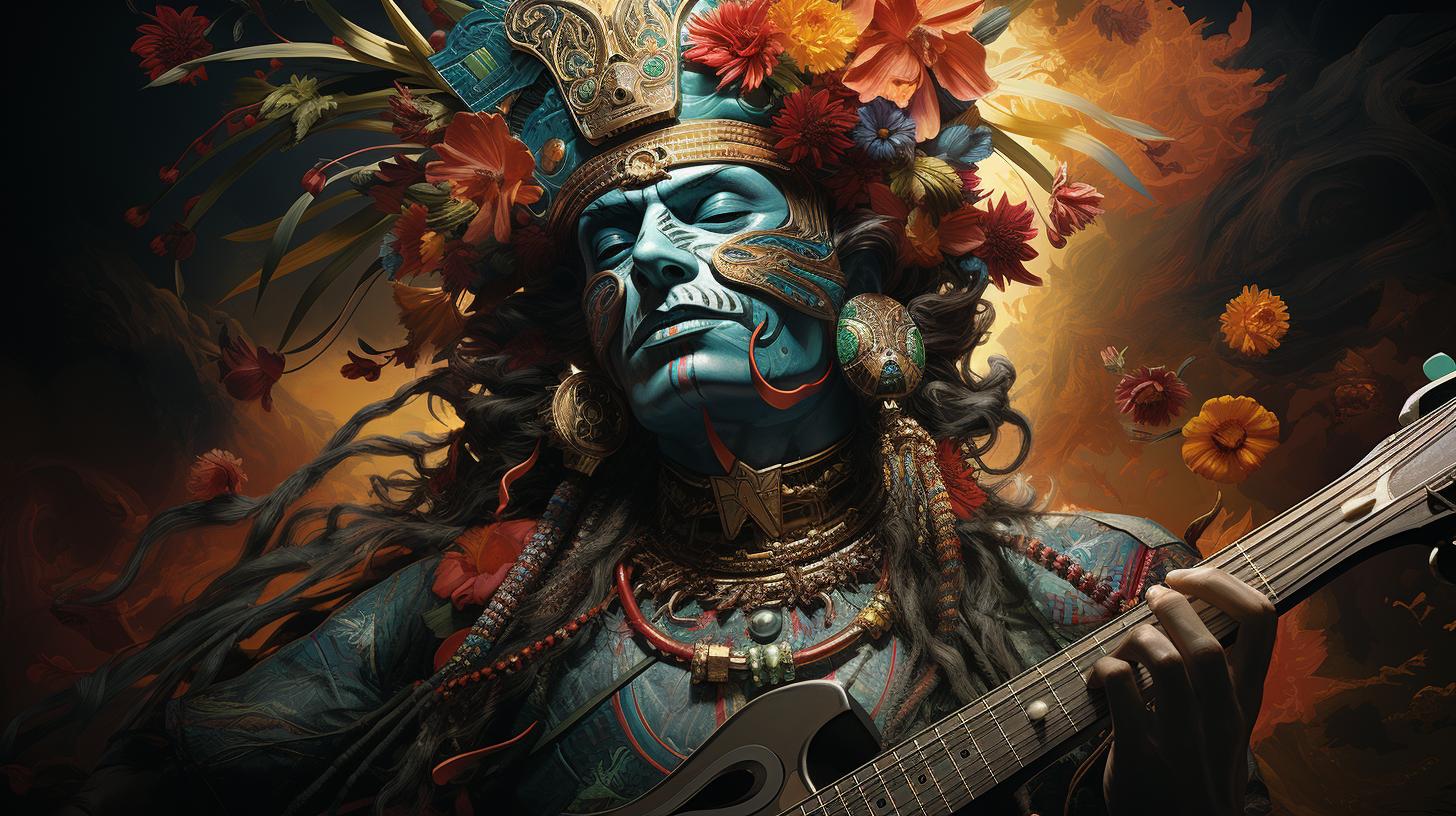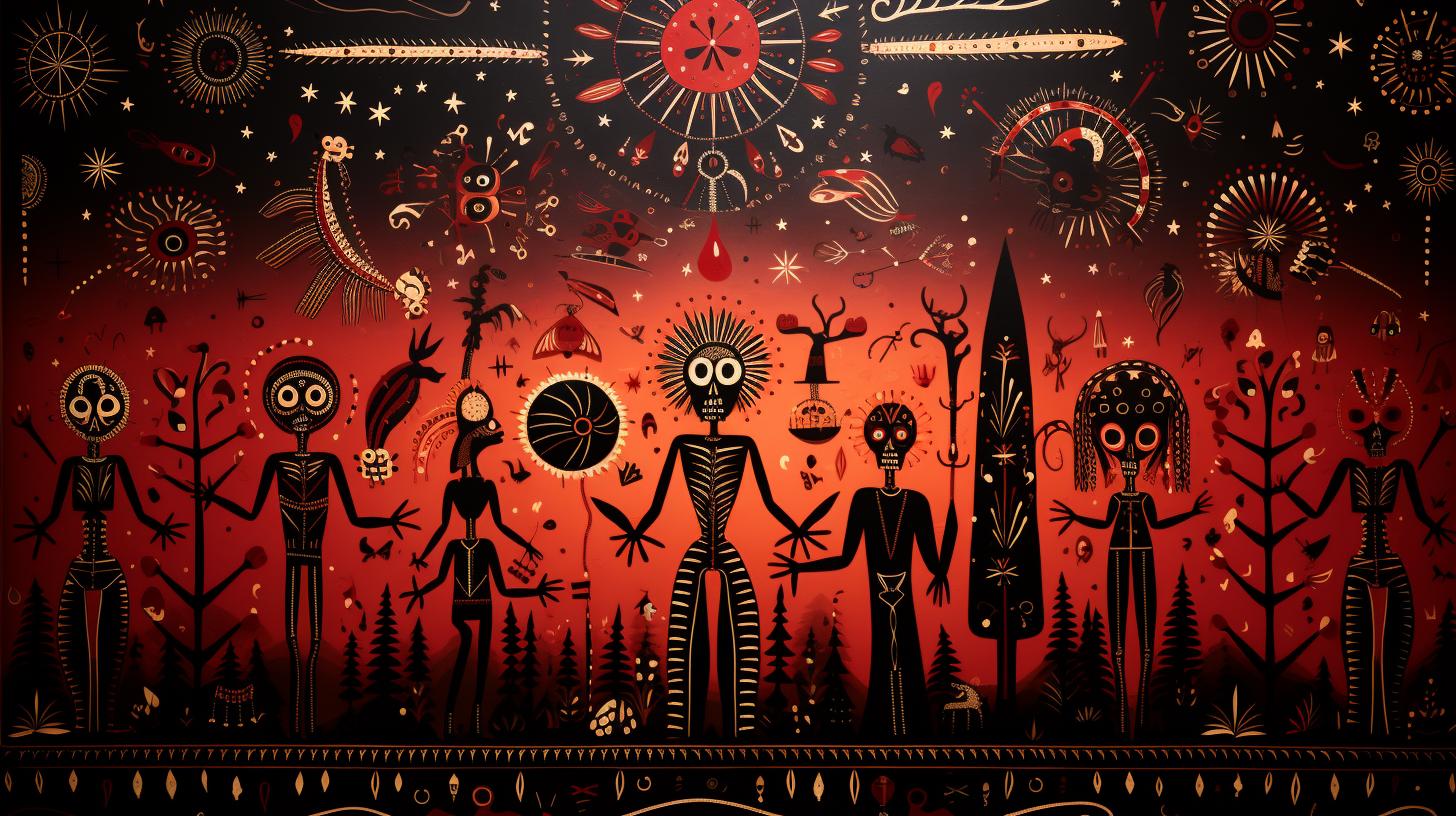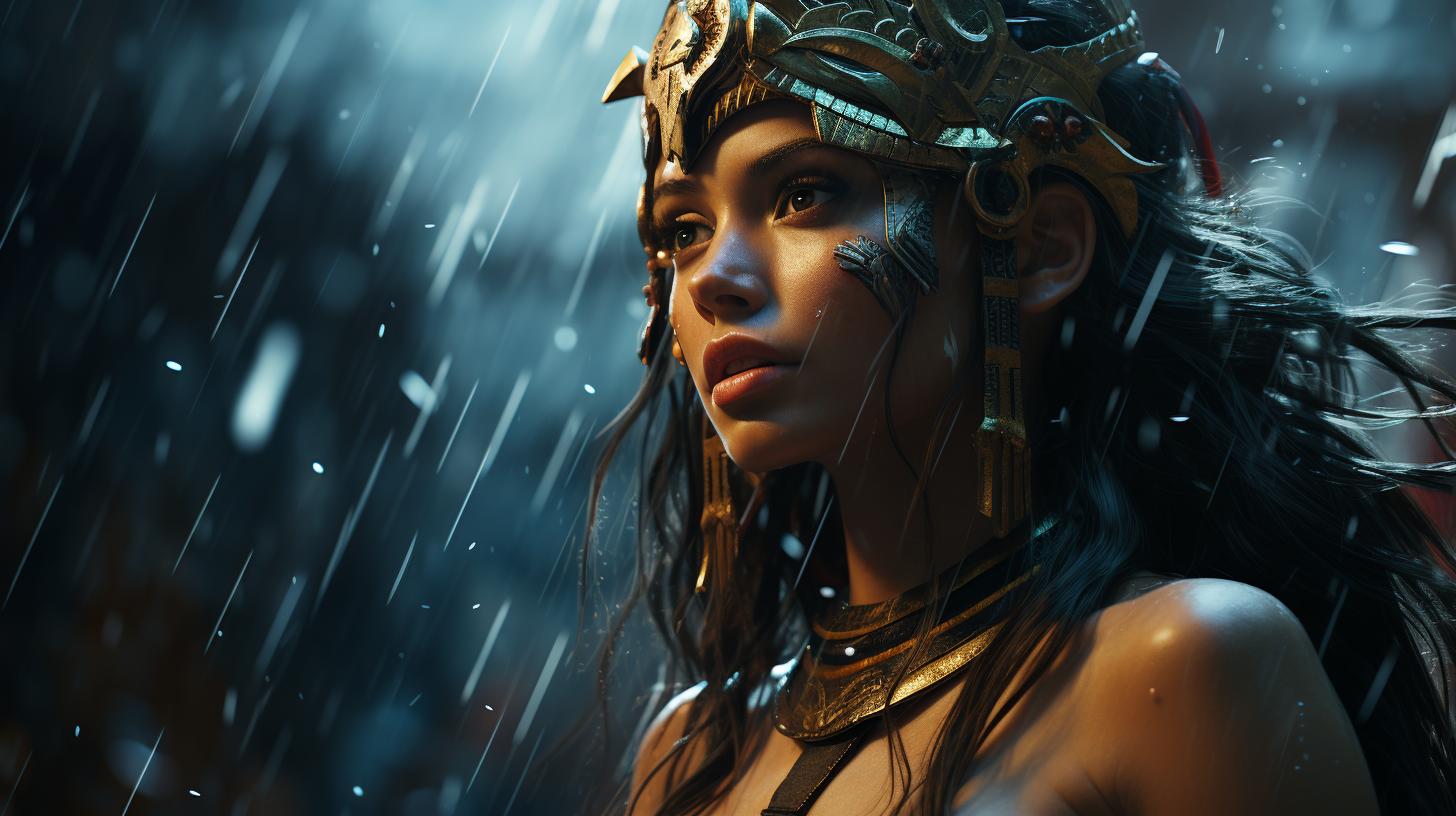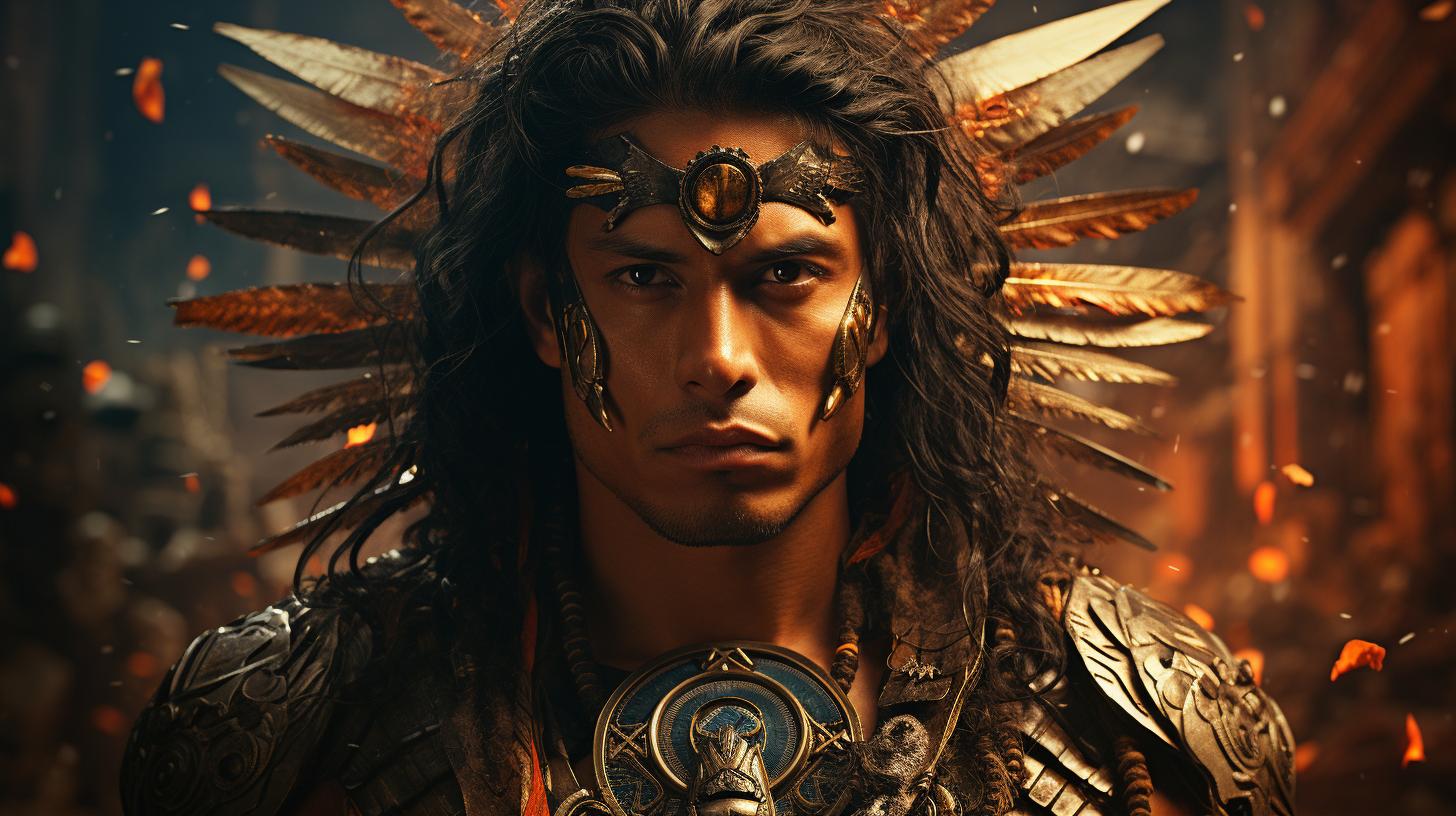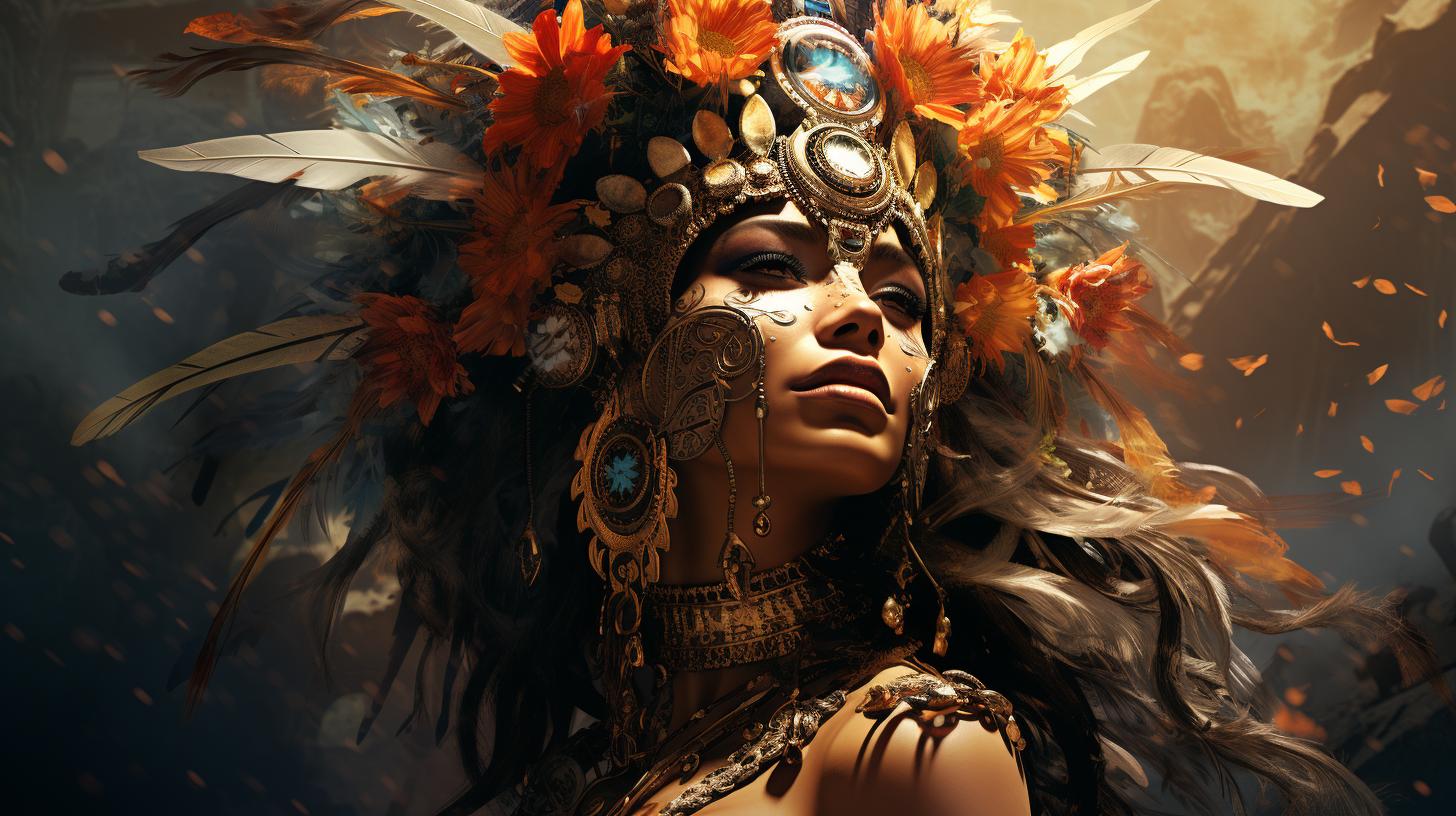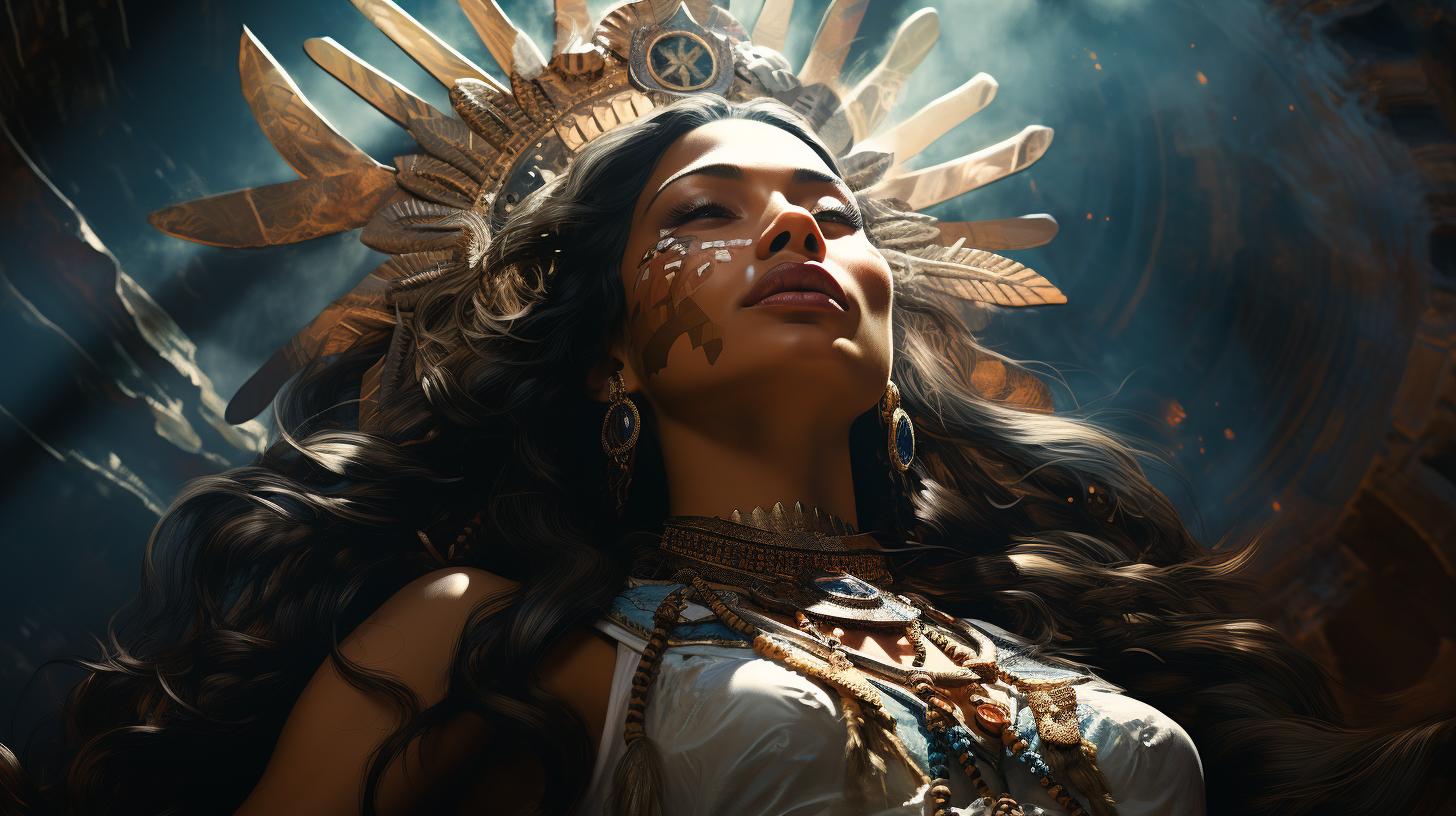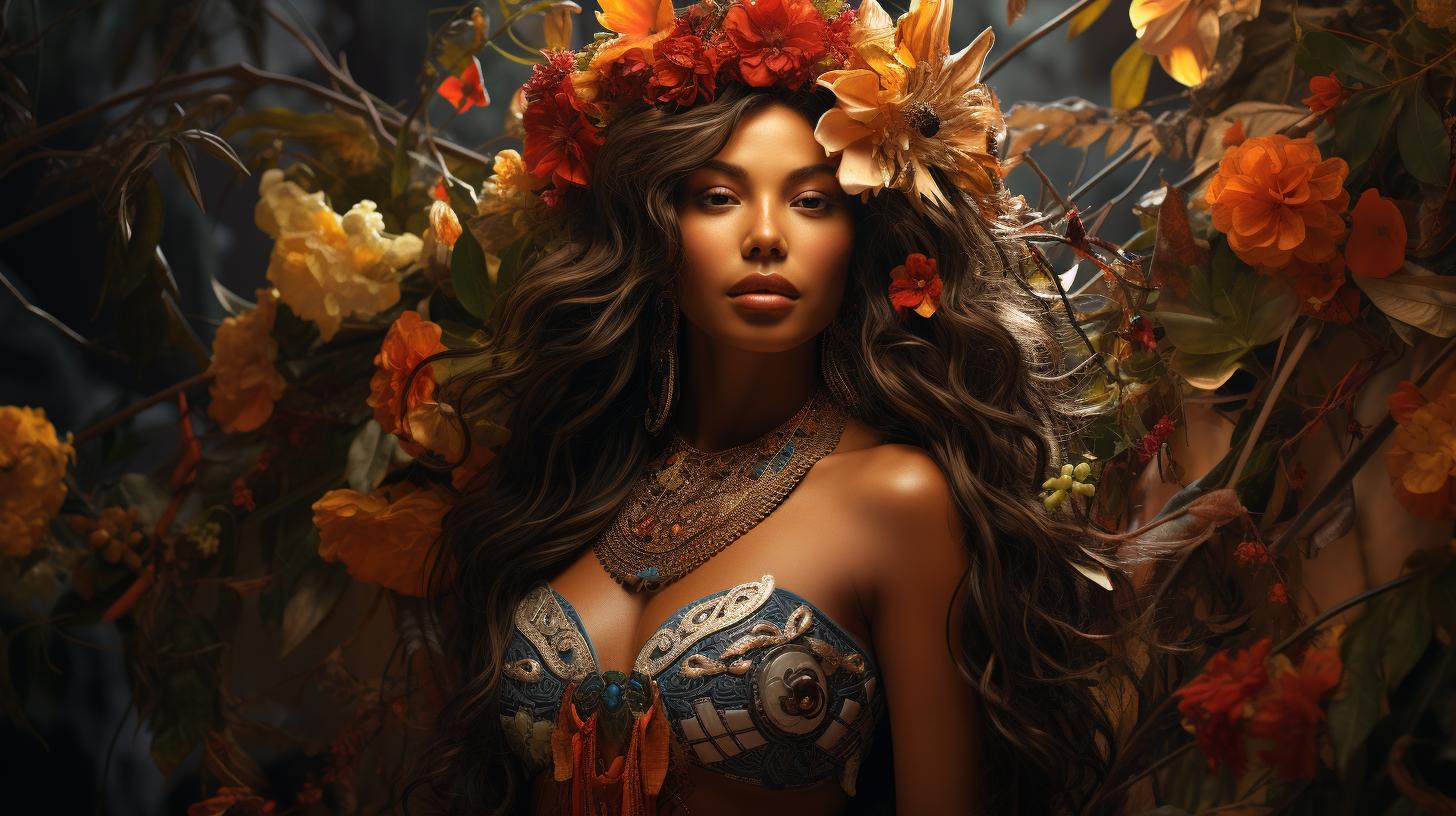Centzon Huitznahua: The Rebellious Stellar Gods of Aztec Mythology
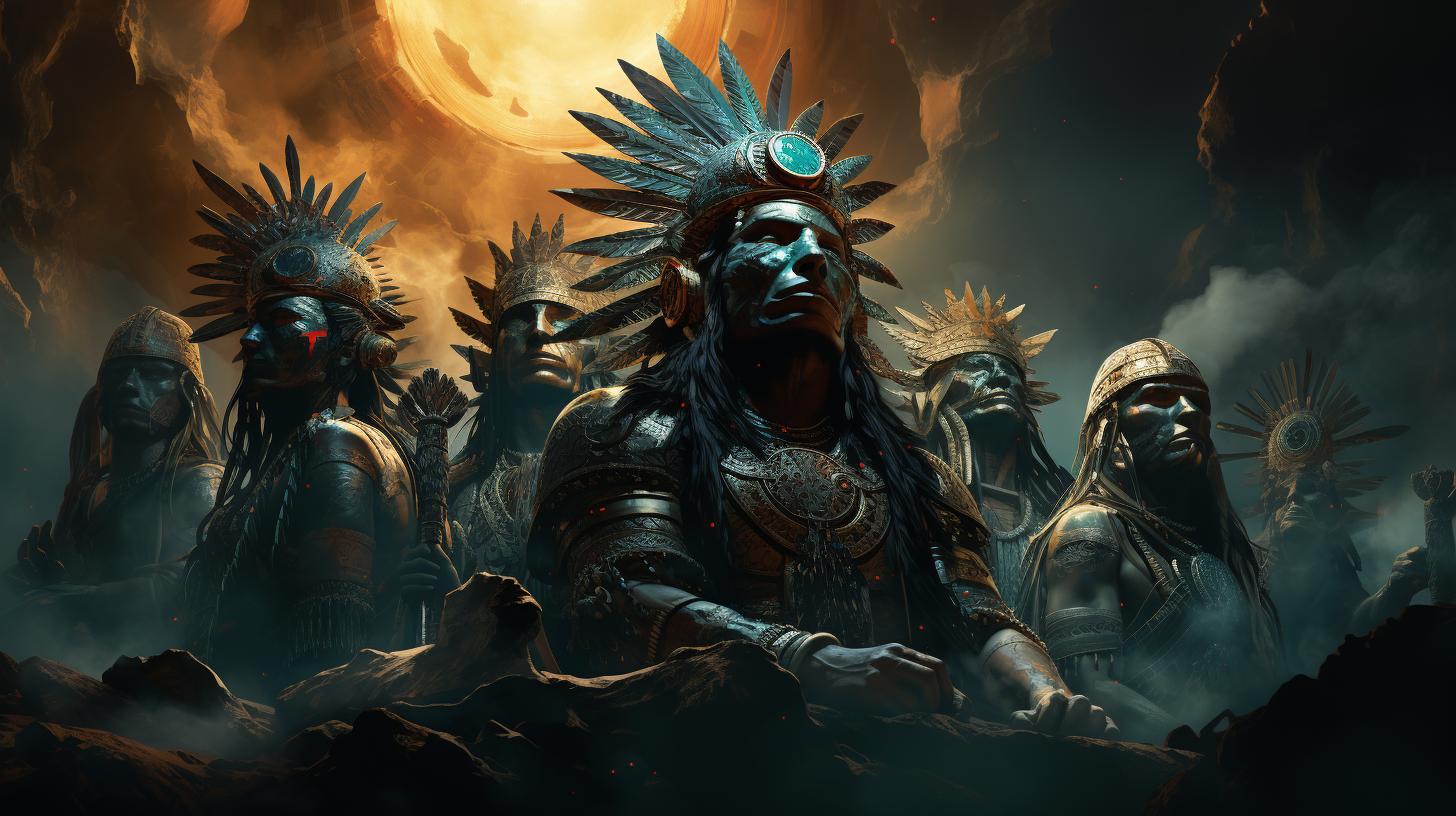
Centzon Huitznahua, the rebellious stellar gods of Aztec mythology, play a significant role in the complex pantheon of Aztec deities. This article explores their story, which revolves around the conflict between Huitzilopochtli, the god of the sun, and his siblings, the Centzon Huitznahua.
It delves into the mythological significance of their battles and discusses archaeological evidence, historical accounts, and the cultural legacy left by Centzon Huitznahua in Aztec art and religious practices. Join us on this exploration into the intriguing world of Aztec mythology and the divine struggle for power.
Aztec Gods in Mythology and Religion
Aztec mythology is rich with a diverse pantheon of gods and goddesses, each playing a unique role in the religious and spiritual beliefs of the Aztec civilization. These deities were revered and worshipped by the Aztecs, shaping their worldview and rituals.
Among the numerous gods, the Centzon Huitznahua stand out as the rebellious stellar gods, capturing the imagination with their cosmic significance and the conflicts they were involved in.
The Deities of Aztec Mythology
The Aztec pantheon consisted of countless deities, representing various aspects of nature, celestial bodies, and human endeavors. These gods were believed to influence all aspects of life, from agricultural fertility to war and sacrifice.
The Aztecs worshipped and offered sacrifices to their gods to maintain a harmonious balance between the divine and mortal realms.
Centzon Huitznahua: The Rebellious Stellar Gods
Among the divine figures in Aztec mythology, the Centzon Huitznahua hold a significant place. They are known as the rebellious stellar gods, associated with the southern stars. As the children of Coatlicue, the goddess of fertility, and her sister Coyolxauhqui, the Centzon Huitznahua played a pivotal role in the cosmic conflict that shaped the Aztec world.
Huitzilopochtli and the Southern Stars
Huitzilopochtli, the sun god, played a central role in the mythology surrounding the Centzon Huitznahua. Born fully grown and armed from his mother’s womb, Huitzilopochtli symbolizes the triumph of light and order over darkness.
He leads the gods of the south into battle against the gods of the north, including the Centzonmīmixcōa, representing the celestial struggle between the day and the night.
Coyolxauhqui and the Sibling Conflict
The story of Centzon Huitznahua intertwines with the sibling conflict between Coyolxauhqui and Huitzilopochtli. Coyolxauhqui, fueled by anger and jealousy, incited her 400 rabbit brothers to avenge their mother’s supposed dishonor.
However, Huitzilopochtli, being aware of the plot, emerged victorious in a fierce battle against Coyolxauhqui and her siblings, asserting his dominance and becoming the supreme ruler.
Centzon Totochtin and Chalchiuhtlatonal: Other Deities in the Pantheon
Alongside the Centzon Huitznahua, there are other notable deities in the Aztec pantheon. The Centzon Totochtin were a group of deities associated with fertility and alcohol, often depicted as rabbit gods.
Chalchiuhtlatonal, on the other hand, was a goddess of precious green stones, symbolizing life and abundance. These additional deities further enriched the complexity of the Aztec religious system.
The Legend of Centzon Huitznahua
The legend of Centzon Huitznahua revolves around a captivating tale of conflict and divine power struggle within the Aztec pantheon.
This section delves into the mythological narrative, exploring key aspects such as Coaticue’s pregnancy and the plan of revolt, Huitzilopochtli’s birth and the defeat of the Centzon Huitznahua, and the mythological significance of the battle.
Coaticue’s Pregnancy and the Plan of Revolt
In this part of the legend, Coaticue, the mother of Huitzilopochtli, discovers the wrath of her sister Coyolxauhqui through one of the rabbits. Meanwhile, Huitzilopochtli, still in Coaticue’s womb, learns about the plan.
Coyolxauhqui incites her 400 rabbit brothers to seek revenge against their mother. The stage is set for a fierce sibling conflict.
Huitzilopochtli’s Birth and the Defeat of the Centzon Huitznahua
Upon Huitzilopochtli’s birth, fully grown and armed for battle, he confronts Coyolxauhqui in a surprise attack.
Despite the pleas for mercy from the rabbit brothers, Huitzilopochtli triumphs over them all, establishing himself as the supreme ruler. The defeat of the Centzon Huitznahua marks a turning point in the narrative and sets the stage for Huitzilopochtli’s ascension as the sun god.
The Mythological Significance of the Battle
Within Aztec mythology, the battle between Huitzilopochtli and the Centzon Huitznahua holds deep mythological symbolism. It represents the dawn of a new era and the triumph of light over darkness.
Huitzilopochtli’s victory not only solidifies his position as the sun god but also signifies the overcoming of the rebellious stellar gods and their association with the southern stars.
Archaeological Evidence and Historical Accounts
Archaeological evidence and historical accounts provide valuable insights into the mythology of Centzon Huitznahua.
Researchers have relied on the works of Bernardino de Sahagún and Diego Durán as important sources of information. These Spanish missionaries documented the Aztec beliefs and rituals in their written texts, which have served as key references in understanding the Centzon Huitznahua narrative.
Bernardino de Sahagún and Diego Durán as Sources
Bernardino de Sahagún and Diego Durán dedicated their efforts to preserving the rich cultural and religious traditions of the Aztec civilization. Sahagún’s “Florentine Codex” and Durán’s “The History of the Indies of New Spain” provide valuable accounts of the mythological stories, including the Centzon Huitznahua saga.
These written records allow us to delve into the intricate details and symbolic meanings associated with the rebellious stellar gods.
The Códice Azcatitlan: Depicting the Mythological Narrative
One of the significant sources of visual representation comes from the Códice Azcatitlan. This pictorial manuscript showcases scenes from Aztec mythology, including the Centzon Huitznahua narrative. The codex presents vivid illustrations of the gods, their battles, and key events, providing a unique visual insight into the mythological world of the Centzon Huitznahua.
Artifact Discoveries: Ladle-Type Censer and Brazier
Archaeological excavations have unearthed artifacts related to Aztec religious practices, shedding light on the material culture associated with Centzon Huitznahua. Among the notable discoveries are a ladle-type censer and a large stone brazier used for burning incense, offerings, and ritual implements.
These artifacts provide tangible evidence of the centrality of Centzon Huitznahua in religious ceremonies and the belief system of the Aztecs.
Centzon Huitznahua and their Role in Mesoamerican Mythology
The Centzon Huitznahua, known as the rebellious stellar gods in Aztec mythology, held significant roles within Mesoamerican cosmology and religious practices. This section explores their relationship with the Aztec calendar, their symbolism of the southern stars, and their influence on Mesoamerican cosmology.
The Relationship with Aztec Calendar and Religious Practices
The Centzon Huitznahua played an integral part in the Aztec calendar, particularly in relation to the southern region. They represented the stars and constellations that were visible from this geographical area.
Their movements and positions were closely observed and integrated into the intricate calendar system, serving as markers for important ceremonial dates and religious rituals.
The Aztecs believed that these celestial deities influenced various aspects of life, such as agricultural cycles, harvests, and the well-being of the community.
Their synchronization with the calendar ensured a harmonious connection between the celestial and earthly realms, reinforcing the divine order and balance.
Symbolism of the Southern Stars
In Aztec mythology, the southern stars held profound symbolism, associated with fertility, abundance, and prosperity. The Centzon Huitznahua, as representations of these stars, embodied the power and blessings linked to these concepts.
Their rebellious nature added an intriguing layer of complexity to their symbolism, suggesting the dualities and dichotomies present in the Aztec worldview.
The southern stars were believed to guide and protect individuals during their daily lives, offering guidance, wisdom, and celestial energy.
The imagery of the Centzon Huitznahua often included feathers, alluding to their connection to the celestial realm and their rebellious nature, which set them apart from other deities.
Influence on Mesoamerican Cosmology
The Centzon Huitznahua played a crucial role in shaping the cosmological beliefs of the Aztecs and other Mesoamerican civilizations.
Their rebellious acts, conflicts, and ultimate defeat by Huitzilopochtli exemplified the struggle between order and chaos, light and darkness, in the cosmic narrative.
Their storyline was interwoven with other deities and celestial phenomena, creating a rich tapestry of mythological narratives that reflected the complex worldview of the Mesoamerican cultures.
The centrality of the Centzon Huitznahua in these cosmological narratives reinforces their significance and enduring impact on the cultural and spiritual fabric of the Aztecs and neighboring civilizations.
The Legacy of Centzon Huitznahua in Aztec Culture
Artistic Representations: Coyolxauhqui Sculpture and Templo Mayor
Centzon Huitznahua’s legacy in Aztec culture is vividly represented through various artistic works, with one notable example being the Coyolxauhqui sculpture.
This remarkable stone carving, discovered at the Templo Mayor in Mexico City, depicts the lifeless body of Coyolxauhqui, slain by Huitzilopochtli in the epic battle.
The sculpture showcases the exceptional talent and craftsmanship of the Aztec artists who meticulously captured the intense emotions and dramatic narrative of the mythological conflict.
It serves as a powerful visual testament to the triumph of Huitzilopochtli and the downfall of the rebellious Centzon Huitznahua.
Cultural Significance and Continuing Influence
The legacy of Centzon Huitznahua holds immense cultural significance in Aztec society. Their story symbolizes the eternal struggle between order and chaos, familial loyalty and rebellion, and the cycles of birth and death.
The mythological narrative serves as a moral lesson, emphasizing the consequences of challenging divine authority.
This tale has permeated various aspects of Aztec culture, influencing religious practices, calendar celebrations, and societal values.
The epic battle between Huitzilopochtli and the Centzon Huitznahua highlights the importance of leadership, resilience, and the eternal battle between light and darkness.
Even in contemporary times, the influence of Centzon Huitznahua can be seen in artistic expressions, literature, and the ongoing fascination with Aztec mythology.
The legacy of these rebellious stellar gods continues to inspire storytellers, artists, and scholars, ensuring their place in the rich tapestry of Mesoamerican heritage.
Unanswered Questions and Further Study
While the legend of Centzon Huitznahua has been extensively studied and analyzed, there are still some unanswered questions that researchers continue to explore. As the complexity of Aztec mythology unfolds, scholars have identified several areas that warrant further investigation and examination.
These include:
- The exact significance and symbolism of the sibling conflict between Centzon Huitznahua and Coyolxauhqui.
- The deeper meaning behind the birth of Huitzilopochtli as a fully grown and armed god.
- The relationship between Centzon Huitznahua and other deities in the Aztec pantheon, such as Centzon Totochtin and Chalchiuhtlatonal.
- The precise rituals and practices associated with the worship of Centzon Huitznahua and their place in the Aztec calendar.
- The extent of the influence of Centzon Huitznahua on Mesoamerican cosmology and belief systems.
Further study of Aztec archaeological artifacts related to Centzon Huitznahua, such as the ladle-type censer and the brazier, could provide valuable insights into their religious rituals and practices.
Analysis of these artifacts and their cultural context may shed light on the role and significance of Centzon Huitznahua in Aztec society.
Additionally, exploring the artistic representations of Centzon Huitznahua, such as the iconic Coyolxauhqui sculpture found in the Templo Mayor, could deepen our understanding of their cultural and mythological importance.
Examining the connections between these depictions and the broader artistic motifs of the Aztec civilization may reveal new layers of symbolism and meaning.
The study of Centzon Huitznahua and their place in Aztec mythology is a constantly evolving field of research, with new discoveries and insights being made all the time.
Through interdisciplinary approaches that combine archaeology, history, anthropology, and mythology, scholars aim to unravel the mysteries and complexities of this fascinating and enigmatic aspect of Aztec culture.
.

